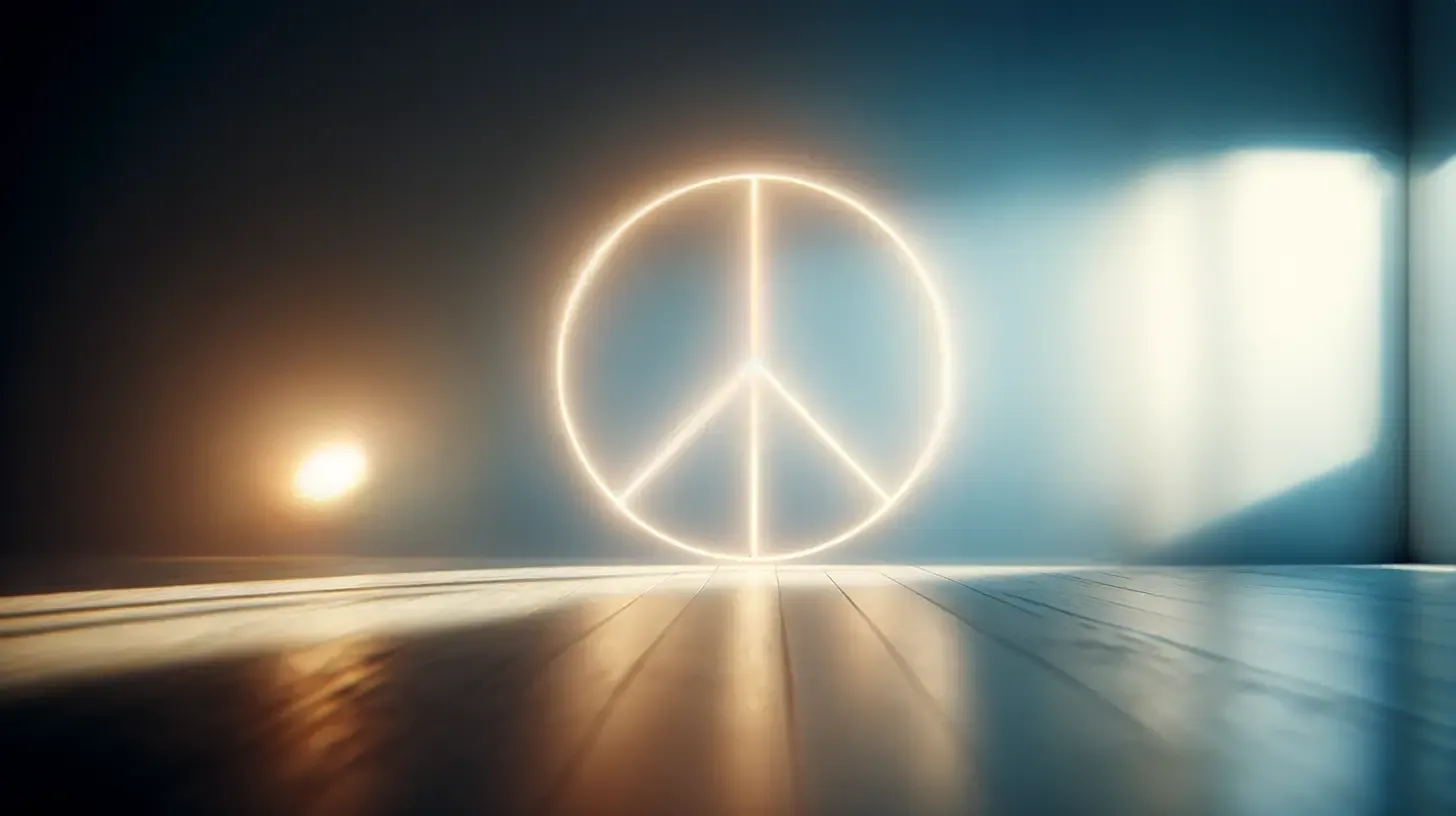24 February 2024
The Peace Symbol Origins Trace Back to a Call for Nuclear Disarmament.

Press the play button in the top right corner to listen to the article
The iconic peace symbol that has become a universal sign of hope and nonviolence was born out of a campaign for nuclear disarmament in the late 1950s. Created by Gerald Holtom, a professional designer and a graduate of the Royal College of Art, the symbol was first introduced to the public during a protest march in London.
Holtom, deeply committed to the cause of peace and a conscientious objector during World War II, designed the symbol for the Direct Action Committee Against Nuclear War (DAC) for their Easter march in 1958 from Trafalgar Square in London to the Atomic Weapons Research Establishment at Aldermaston. The design merges the semaphore signals for the letters "N" and "D," standing for "Nuclear Disarmament," enclosed within a circle symbolizing Earth.
The symbol quickly transcended its initial context, becoming emblematic of the broader peace movement. Its debut occurred during a significant moment in history, as thousands gathered to voice their opposition to the nuclear arms race between superpowers, which was escalating the threat of nuclear warfare. The march from London to Aldermaston marked the first major public display of the peace sign, setting the stage for its adoption by various peace movements worldwide.
Beyond its original association with nuclear disarmament, the peace symbol was embraced by the civil rights movement, anti-Vietnam War protests, and the broader counter-culture movements of the 1960s and 1970s. Its simplicity and powerful message of peace and unity helped it become a global icon, representing a universal desire for a world free of war and conflict.
Despite occasional controversies and misinterpretations of its meaning, the peace symbol has endured as a potent representation of the human yearning for harmony and nonviolence. Its creation is a testament to the power of design to influence social change and encapsulate complex messages in a simple, recognizable form. Today, the peace symbol remains a rallying cry for movements advocating for peace, justice, and equality around the world, illustrating the enduring relevance of its message and the unyielding hope for a more peaceful future.
The content, including articles, medical topics, and photographs, has been created exclusively using artificial intelligence (AI). While efforts are made for accuracy and relevance, we do not guarantee the completeness, timeliness, or validity of the content and assume no responsibility for any inaccuracies or omissions. Use of the content is at the user's own risk and is intended exclusively for informational purposes.
#botnews















































































